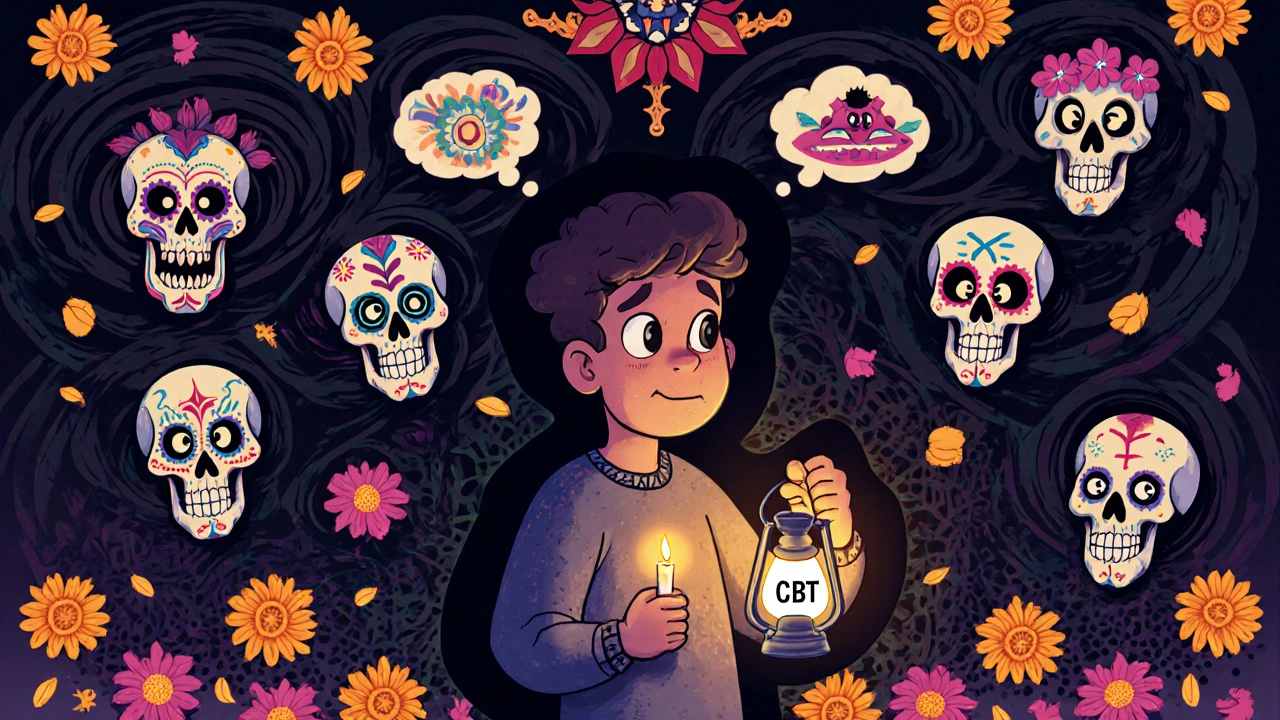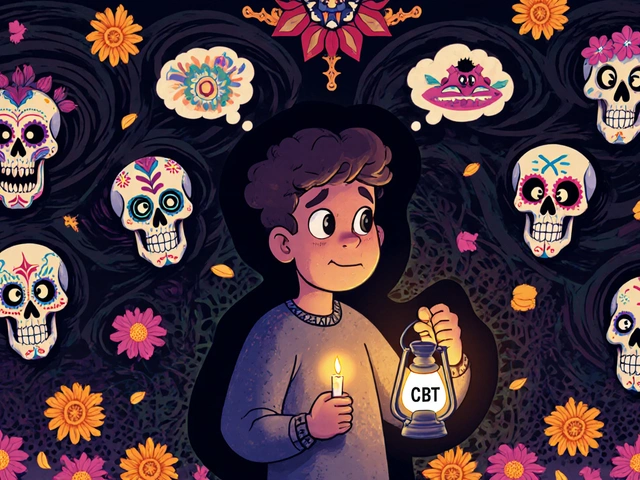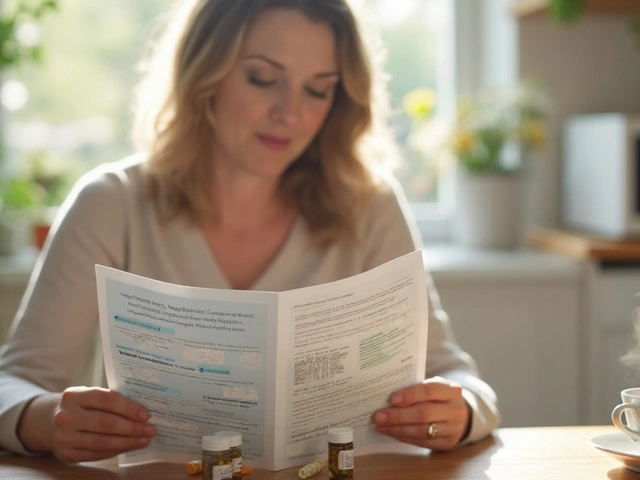What Are Anxiety Disorders?
Anxiety disorders aren’t just feeling nervous before a big presentation or worrying about bills. They’re persistent, overwhelming, and often irrational fears that take over your life. You might be exhausted from constant worry, terrified of leaving the house, or stuck in cycles of intrusive thoughts and rituals. According to the Anxiety and Depression Association of America (a nonprofit organization dedicated to understanding and treating anxiety disorders), nearly 1 in 5 U.S. adults deals with an anxiety disorder each year. Women are more likely to be affected than men, and half of all cases start before age 11. These aren’t phases you grow out of-they’re real medical conditions that need proper care.
Seven Main Types of Anxiety Disorders
Not all anxiety is the same. There are seven distinct types, each with its own pattern of symptoms and triggers.
- Generalized Anxiety Disorder (GAD): Constant, excessive worry about everyday things-work, health, family-even when there’s no real reason to be concerned. To be diagnosed, this worry has to happen more days than not for at least six months.
- Panic Disorder: Sudden, intense episodes of fear that feel like a heart attack. You might shake, sweat, feel like you’re dying, or think you’re losing control. These attacks come out of nowhere and can make you afraid to leave your home.
- Social Anxiety Disorder: Fear of being judged, embarrassed, or humiliated in social situations. This isn’t just shyness. It’s so severe that people avoid talking on the phone, eating in public, or even going to work.
- Specific Phobias: Extreme fear of a particular thing or situation-heights, spiders, flying, needles. The fear is out of proportion to the actual danger, and people go to great lengths to avoid it.
- Obsessive-Compulsive Disorder (OCD): Intrusive, unwanted thoughts (obsessions) that lead to repetitive behaviors (compulsions) like washing hands, checking locks, or counting. These rituals are meant to reduce anxiety but end up taking over daily life.
- Separation Anxiety Disorder: Often thought of as a childhood issue, but adults can have it too. It’s an intense fear of being separated from loved ones, even when they’re safe and nearby.
- Selective Mutism: A child (or sometimes adult) who speaks normally at home but can’t speak in certain settings like school or work. It’s not defiance-it’s anxiety that freezes their voice.
These aren’t just labels. Each one affects how your brain processes fear and safety signals. The Diagnostic and Statistical Manual of Mental Disorders, Fifth Edition (DSM-5) (the standard classification system used by mental health professionals) defines them precisely so treatment can be targeted.
Physical and Mental Symptoms You Might Experience
Anxiety doesn’t just live in your head-it shows up in your body. Common physical signs include:
- Heart rate jumping to 110-140 beats per minute during panic attacks
- Excessive sweating (reported by 92% of people with panic disorder)
- Trembling or shaking (87%)
- Shortness of breath (83%)
- Dizziness or lightheadedness (76%)
- Nausea or stomach upset (68%)
On the mental side, you might notice:
- Difficulty concentrating (89% of GAD patients)
- Racing thoughts that won’t stop (82%)
- Catastrophic thinking-imagining the worst-case scenario in every situation (76%)
- Rumination-replaying the same thoughts over and over (91%)
- Feeling like something terrible is about to happen (95% during panic attacks)
- Fear of losing control or going crazy (88%)
These symptoms aren’t weakness. They’re your nervous system stuck in fight-or-flight mode-even when there’s no real threat. The body doesn’t know the difference between a bear and a work email. It just reacts.

First-Line Treatments: CBT and Medications
The best treatments for anxiety disorders are backed by decades of research. Two approaches stand out: cognitive behavioral therapy (CBT) and medication.
CBT is the gold standard. It teaches you how to recognize distorted thoughts, challenge them, and change your behavior. For example, if you think, “Everyone will laugh at me if I speak up,” CBT helps you test that belief. You might practice speaking in a low-stakes setting and realize no one even noticed. Studies show CBT reduces symptoms by 50-60% across all anxiety types. Exposure therapy-a key part of CBT-is especially powerful for phobias and social anxiety, with success rates of 60-80% when done correctly.
Medications like SSRIs (sertraline, fluoxetine, escitalopram) are recommended as first-line drugs. They work by increasing serotonin in the brain, which helps regulate mood and fear responses. After 8-12 weeks, 40-60% of people see a meaningful drop in symptoms. SNRIs like venlafaxine are also effective. Unlike benzodiazepines (like Xanax), which work fast but can be addictive, SSRIs are safe for long-term use. The American Psychiatric Association (the leading professional organization for psychiatrists in the U.S.) advises against using benzodiazepines for more than a few weeks.
What Works in Real Life? The Gap Between Research and Reality
Even though CBT and SSRIs work in clinical trials, real-world results are mixed. A 2022 survey of over 12,000 patients found only 37% achieved full remission after six months. Why?
- Access: Wait times for specialized therapists can be 6-8 weeks.
- Dropout: 42% quit because the work feels too hard-especially exposure exercises.
- Side effects: Some people feel emotionally numb on SSRIs or gain weight. Others switch to buspirone or other alternatives.
- Insurance: Many plans limit therapy sessions or don’t cover them at all.
People on Reddit and TherapyTribe share honest stories: “CBT tools helped me manage panic attacks, but exposure made me want to quit.” “I felt better physically on medication, but like I wasn’t myself.” These aren’t failures-they’re signs that treatment needs to be personalized.

New and Emerging Treatments
The field is evolving fast. In 2023, the FDA approved zuranolone (Zurzuvae), the first oral drug specifically for postpartum anxiety, with a 54% remission rate. Acceptance and Commitment Therapy (ACT) is now recognized as equally effective as CBT-it focuses on accepting uncomfortable feelings instead of fighting them.
Other breakthroughs include:
- Digital therapeutics: Apps like nOCD and Wysa are FDA-cleared and show 35-45% symptom reduction in 8 weeks with daily use.
- Ketamine-assisted therapy: In trials, it reduced severe anxiety in 65% of patients within hours-though it’s still experimental and not widely available.
- AI-powered prediction: Stanford researchers built an algorithm that predicts panic attacks 24 hours in advance with 87% accuracy by analyzing voice patterns and movement.
- Genetic testing: Experts predict that within five years, blood tests will guide medication choices, cutting out the trial-and-error phase.
These aren’t sci-fi. They’re real tools becoming available now.
How to Start Getting Help
If you think you have an anxiety disorder, here’s how to take the first step:
- Track your symptoms: Use a simple journal. Note when anxiety hits, what triggered it, and how you reacted.
- See your primary care doctor: They can rule out medical causes (like thyroid issues) and refer you to a mental health specialist.
- Ask about CBT: Look for therapists trained in cognitive behavioral therapy. The Anxiety and Depression Association of America (offers a directory of vetted therapists) has a searchable database.
- Consider digital options: If waitlists are long, try an FDA-cleared app like nOCD or Woebot. They’re not replacements for therapy but great starters.
- Don’t give up: Recovery isn’t linear. Some days will be harder. That doesn’t mean treatment isn’t working.
Support groups-like the 300+ weekly ones offered by ADAA-can help you feel less alone. NAMI’s 24/7 helpline answers over 25,000 calls a month. You don’t have to do this alone.
Why This Matters Now
Anxiety disorders cost the U.S. economy over $42 billion a year in lost productivity and healthcare. Globally, 284 million people live with them. But stigma is fading. In 2010, only 42% of Americans saw anxiety as a medical condition. Today, it’s 67%. That shift means more people are seeking help-and more resources are being created to meet that need.
The science is clear: anxiety disorders are treatable. Not with willpower, not with positive thinking-but with proven, evidence-based tools. You don’t have to live in constant fear. Help is out there. And it works.








